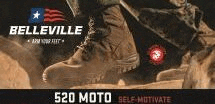In a release published this week, the USAF has announced that maintainers will be allowed to wear shorts in lieu of ABU trousers when temperatures exceed 80 deg F.

Nellis AFB Airmen paved the way starting in the summer of 2019, wearing commercially produced shorts for work on the flight line. Now, the change will be force-wide.
According to the upcoming directive, “Authorized areas (for wear) will include the flight line, hangars and dock areas outside of climate-controlled areas. If commanders authorize the wear of the shorts, they will meet specified requirements that will be incorporated in the upcoming change to AFI 36-2903 for standardization and be worn with the coyote brown T-shirt and uniform green or coyote brown socks with uniform boots.”
But the upcoming change that will effect all Airmen is authorization of ball caps. The recent virtual uniform board recommended procurement of a “tactical cap” which will take approximately a year. The delay is because the cap will have to be Made in the USA and the vast majority of caps which units purchased in the past were not Berry compliant. This is an example of those caps which were worn while deployed to CENTAF.

Another welcome change for many, Airmen and Guardians in all specialties will be authorized to wear their functional community’s approved duty identifier patches. The identifier will be a maximum of five letters and maintain a standard spice brown color scheme. Here’s an example:

The Air Force also announced these changes:
Airmen and Guardians will also have more options for sock colors, glasses frames and bags carried in uniform. Service members will be able to wear conservative, solid black, white, navy blue, gray, desert sand, tan, Defense Logistics Agency?issued green or coyote brown socks with their physical training gear. The socks may have small trademark logos. New guidance for eyeglasses and sunglasses will allow more color options for frames to include black, brown, white, navy blue, gray or transparent material, or gold or silver wire. Finally, additional options for bags and bag colors will be authorized. Messenger and lunch bags will be permitted, and the following colors will be approved for all bags to be carried in uniform: black, brown, gray and navy blue. All authorized bags must be without design, unless ABU or OCP pattern.
Members will be also authorized to wear cold weather accessories without wearing authorized outer garments. For example, the fleece cap and/or gloves may be worn without an outer garment. Headphones or Bluetooth devices may be authorized in more environments. Wear or use of an earpiece, any Bluetooth wireless technology or headphones while in uniform, indoors or outdoors, is authorized for official duties or may be authorized as determined by the installation commander, delegable no lower than the squadron commander level.
These changes are set to take effect on 15 March, once the service updates Air Force Instruction 36-2903, Dress and Appearance.






















































































































